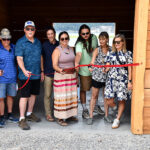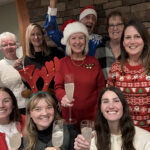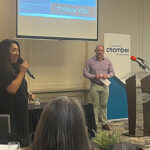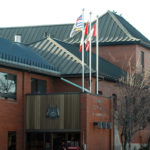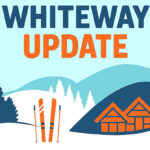Home »

Emergency calling long overdue in KNP
At the start of every weekend there is a well-known and variously considered mad dash through Kootenay National Park, as weekenders flee Alberta for the Columbia Valley and East Kootenay. And then on Sunday or Monday, depending if it is a long weekend, there is another mad dash through the spectacularly beautiful 104 km stretch of Highway 93 between Radium Hot Springs and Castle Mountain Junction as visitors head home.
The Kootenay National Park highway is the vital economic lifeline to the Columbia Valley and one the busier entries to the East Kootenay; one that was envisioned and made to happen by 1922 on the steady insistence of Robert Randolph Bruce. Back then it was a true wilderness adventure to get from Banff to the valley.
Today, Parks Canada reckons about 5,000 vehicles a day course through the park, with many drivers unfortunately viewing the 90 km/h strip of single lane highway as their own personal race track: hence the nickname – ‘Kootenay Park Speedway’ given to it by locals and regular visitors alike. And on busy summer weekends that 5,000 vehicle figure is likely doubled.
A quick Google search of facts and figures related to Highway 93 (anywhere in Canada) reveal little in the way of information about the number of accidents on that strip of highway, but this writer has been living in the region for 20 years, 18 of which were spent working at a newspaper in the Columbia Valley. On Mondays of long weekends my reporters and I would make bets as to when and where the usual crash would occur. Far more often than not we were right about a crash happening.
So anecdotally, I can inform the reader that the parkway has claimed its fair share of vehicles and lives over the years, with the most recent tragedy occurring July 22 when a family of four from California was killed in a horrific collision with a flatbed truck carrying propane.
An issue arising from the most recent tragedy is the fact that there is almost no cell phone service along the parkway, or an availability of emergency call boxes. If there is a serious crash in the park, depending upon where it occurs, those who seek to make an emergency call are faced with having to race to either Radium Hot Springs or back to Storm Mountain, near the Castle Mountain Junction. For experienced travelers in the park, they’ll know to head to Vermilion Crossing, roughly in the middle of the park, to make a call.
Where ever those who seek to make a call get to, that drive eradicates the chance of the ‘the golden hour’ being achieved by emergency responders, meaning the chances of saving lives is greatly diminished. It also increases the chances of another accident as those who are heading off to call 9-1-1 are surely speeding. And many of them don’t know the highway like we locals. Most accidents that occur in the park are a result of people not knowing the road, or realizing that the national park is a haven for most species of large game in North America.
“Between 1986 and 2005, park staff have recorded 956 wildlife-vehicle collisions involving large animals in Kootenay National Park. Most victims of highway strikes are large ungulates (deer, elk, moose, and bighorn sheep), however wolves, coyotes and black bears are also commonly hit,” notes https://www.pc.gc.ca/pn-np/bc/kootenay/.
A great deal of those collisions are between large trucks and wildlife and while tragic for the animals, there is little need for emergency response, except for perhaps a park warden or highways staffer to clean up the mess and record another sad stat.
However, when basic motor vehicles (pickup trucks, cars etc.) smack into an elk or moose or deer at 90 or more kilometres per hour, or a bear as in the case of a motorcyclist a few years back, there is a great likelihood of emergency crews being called out. Now add in the much more dangerous human factor, with scores of long weekend addled revelers speeding down the highway, and even if you’ve never been over Highway 93 in the national park, you can get a picture of the potential for mayhem.
Consider further that drivers must head over three passes and through two wildlife-stuffed valleys, with all the classic mountain road aspects, such as sharp S-bends and some shabby road conditions and you should be able to see that this is a highway where one should be able to make an emergency call .
But it isn’t.
On Jan. 1, 1998, there was a terrible crash in Kootenay National Park, not far from the current goat lick. The road had been closed the evening before for avalanche control and long lines of New Year’s weary drivers formed in the valley and at Castle Mountain Junction. Sometime around about noon, the road was opened and miles long lines of traffic began to converge. Right at the point where the two lines of traffic met, there was a terrible head-on collision, which claimed the life of a 16-year-old girl.
One of the first people on the scene raced back to Radium – normally a drive that would take less than half an hour, but with such a concentrated volume of traffic, it took longer. There was no golden hour for that girl.
The fact is the crash was bad enough that the poor lass would not have been saved even if she was near a hospital.
However, I wrote an editorial in The Valley Echo after that incident where I questioned the lack of call boxes where travelers could make emergency calls.
That was 13 years ago. Many people have died in Kootenay National Park since, including four more July 22. Once again, the crash was horrible enough that the golden hour would not have applied.
But that shouldn’t matter. There have been numerous times when people have had to scramble in search of a cell signal or telephone.
It’s long past time that cell service was provided through the park, as that would surely be a cheaper option than laying phone lines for call boxes. If Parks Canada is getting clammy thinking about the eyesore that would be created by transmission towers, it should collectively think about how crappy they’ll feel if and when an accident occurs where emergency responders could have saved a life or lives had they been able to get to the scene and out in under an hour.
It is time that all the powers that be took the few simple steps necessary to pressure whoever must be pressured to establish cell service in KNP.
Village of Radium Hot Springs Mayor Dee Conklin is one such person wishing for it to happen. Next up should be a joint letter from the valley’s three municipalities, the Regional District of East Kootenay and Columbia River-Revelstoke MLA Norm Macdonald to Kootenay-Columbia MP David Wilks, who must then use his status as an elected official within a ruling party and take care of this long overdue need.
A few minor optic intrusions be damned.
Ian Cobb/e-KNOW
